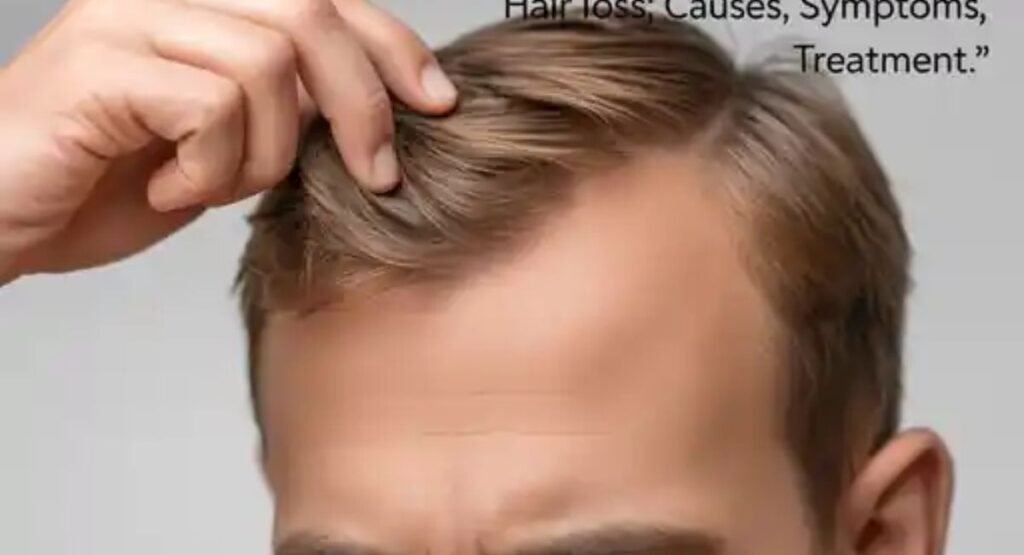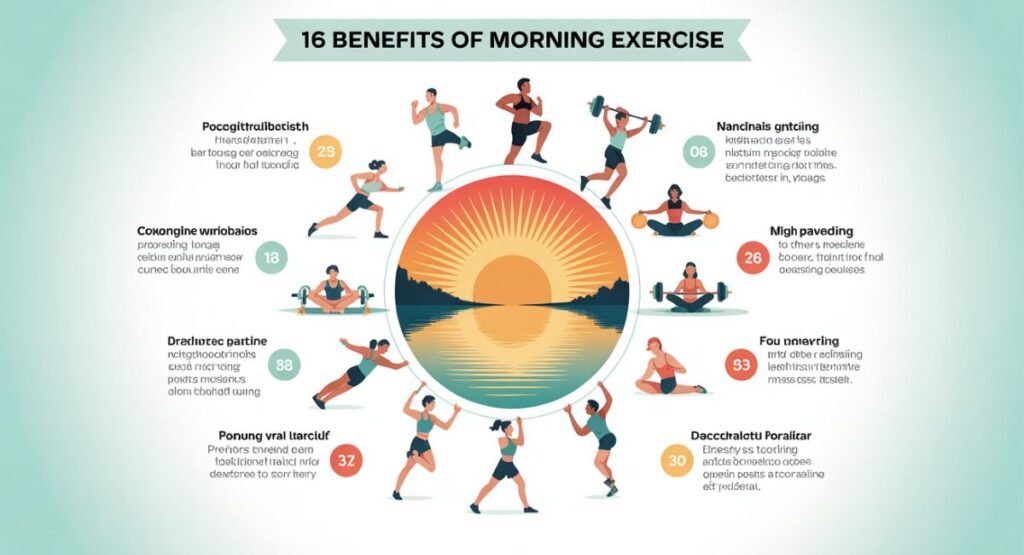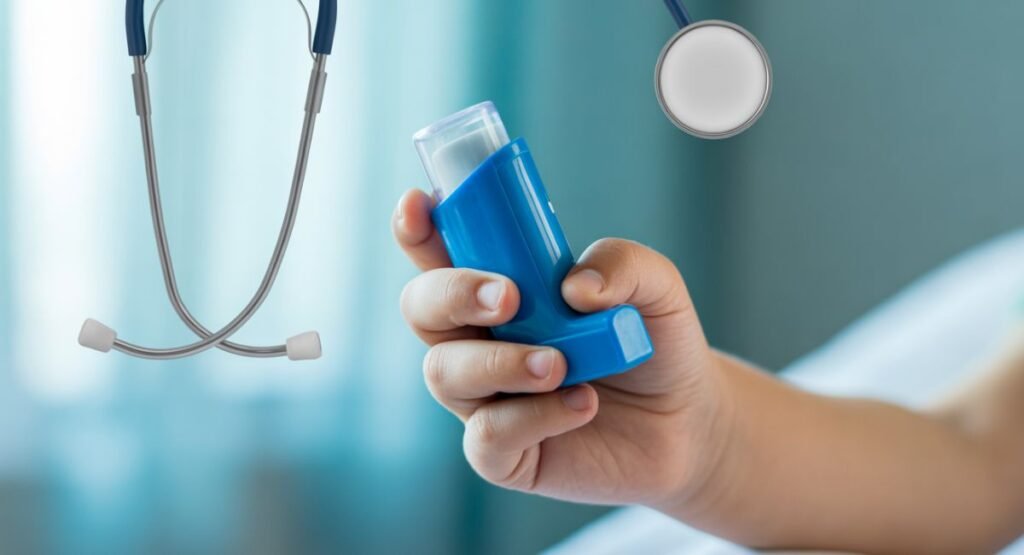Table of Contents
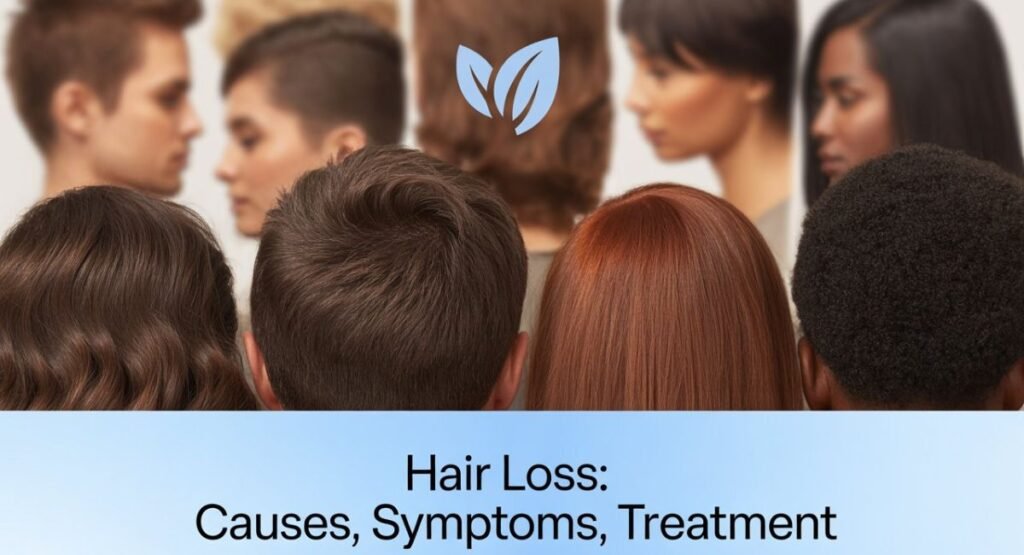
Overview of Hair Loss
Hair loss is more than just a cosmetic issue. It affects confidence, emotional well-being, and social life. The medical term for hair loss is alopecia. It happens when the natural hair growth cycle is disrupted. Hair grows in phases, and when these cycles are shortened, it leads to hair thinning and sometimes permanent baldness.
There are many types of hair loss. The most common is androgenic alopecia, also known as male pattern baldness or female pattern hair loss. Other forms include alopecia areata, an autoimmune disorder; telogen effluvium, caused by stress or illness; and anagen effluvium, often linked to chemotherapy hair loss. Each type has different causes and treatments, so knowing the difference is important.
A surprising fact is how common hair loss is. In the USA, over 50 million men and about 30 million women experience noticeable hair thinning. By age 50, around half of men show signs of hereditary baldness. For women, hormonal changes and hair loss during menopause play a big role.
Symptoms and Causes
The first symptoms of hair loss are often subtle. You may notice extra hair shedding in the shower, thinning near the crown, or a receding hairline. Over time, the hair becomes weak, and the scalp may feel more visible. In women, female pattern hair loss usually shows as a widening part instead of bald patches.
The causes of hair loss vary. Common triggers include genetics, stress-related hair loss, hormonal changes and hair loss, and autoimmune disease and hair loss. Medical conditions like thyroid-related hair loss, iron deficiency hair loss, and protein deficiency also play a role. Even certain drugs, like those for cancer, lead to chemotherapy hair loss. The complications of alopecia are not just physical but emotional too, affecting self-esteem and relationships.
Diagnosis and Tests
A proper diagnosis of hair loss requires professional care. Dermatologists begin with a physical exam, checking scalp health and looking for hair follicle damage. They may ask about family history of hereditary baldness and recent medical conditions linked to hair loss.
Tests often include a scalp biopsy to study hair follicles under a microscope. Blood tests check for nutritional deficiencies, thyroid issues, or autoimmune conditions. Sometimes, doctors also do a pull test to measure how much hair is coming out. Accurate diagnosis ensures the right hair loss treatment options are chosen.
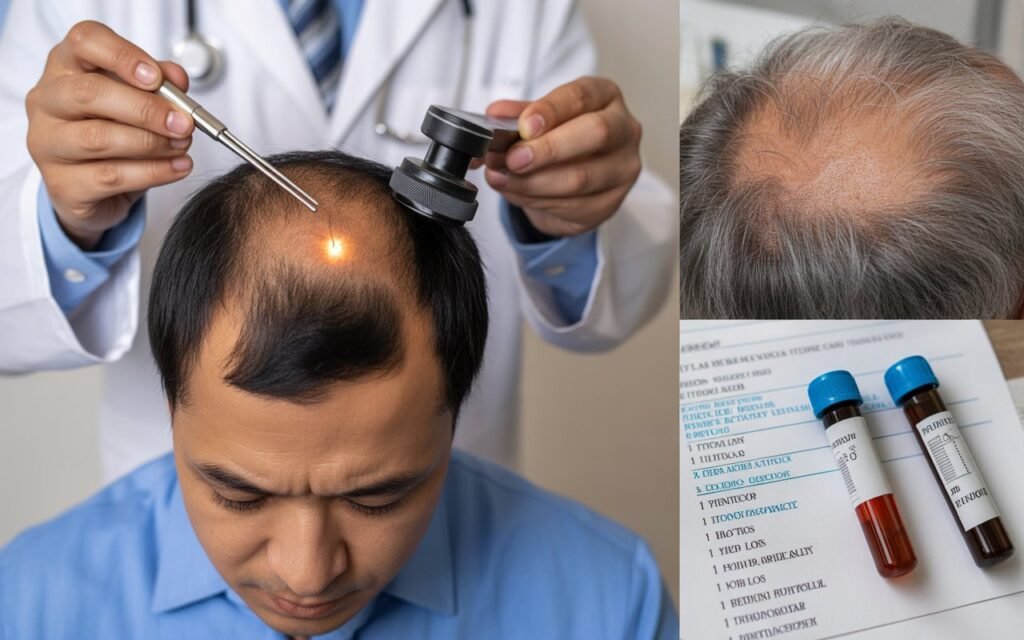
Treatment Options
Modern medicine offers many hair loss treatment options. The most common are minoxidil (Rogaine), an over-the-counter lotion or foam, and finasteride (Propecia), a prescription pill for men. These slow down male pattern baldness and sometimes encourage regrowth.
For severe cases, hair transplant surgery and PRP therapy for hair loss (platelet-rich plasma injections) are effective. New methods include laser therapy, which stimulates the scalp, and experimental drugs in clinical trials. Patients who undergo cancer treatment can benefit from a cooling cap during chemotherapy, which reduces anagen effluvium.
| Treatment Method | Best For | Notes |
| Minoxidil (Rogaine) | Men & Women | Slows hair shedding, may regrow thinning hair |
| Finasteride (Propecia) | Men only | Reduces androgenic alopecia |
| Hair transplant surgery | Advanced baldness | Moves healthy follicles to bald spots |
| PRP therapy for hair loss | Early hair thinning | Uses patient’s plasma to stimulate follicles |
| Laser therapy | Thinning hair | Non-invasive scalp stimulation |
Lifestyle and Home Remedies
For those who prefer natural approaches, there are several natural remedies for hair loss. Gentle scalp massage with essential oils like rosemary can boost circulation and strengthen roots. Oils also improve scalp care tips by reducing dryness and irritation.
Diet plays a major role too. The best diet for hair growth includes lean protein, iron-rich foods, and vitamins A, D, and E. The Mediterranean diet with olive oil, nuts, fish, and fresh vegetables supports strong follicles. Avoiding nutritional deficiencies like iron deficiency hair loss or protein deficiency is essential. Simple lifestyle changes for healthy hair—like avoiding harsh chemicals, reducing heat styling, and protecting hair from the sun—make a difference.
Prevention Tips
The prevention of hair loss is possible with small daily habits. Keeping the scalp clean and nourished supports growth. Regular washing with mild shampoos improves scalp health and reduces buildup. Managing stress through meditation or exercise can prevent stress-related hair loss.
Avoiding crash diets, chemical treatments, and tight hairstyles reduces damage. Using hats or sunscreen ensures scalp protection from the sun. For people with a family history of hereditary baldness, early use of medications like minoxidil may delay progression.
Outlook and Prognosis
The prognosis of alopecia depends on the type and cause. Conditions like telogen effluvium usually improve once the trigger, such as stress or illness, is removed. However, androgenic alopecia and hereditary baldness are progressive. Treatments may slow the process but rarely cure it.
The question, “Can hair loss be reversed?” depends on the root cause. For example, thyroid-related hair loss can often be reversed with treatment. But in permanent follicle damage, regrowth is unlikely. Long-term, many patients explore hair restoration techniques like transplants, wigs, or cosmetic styling.
Living With Hair Loss
Coping with hair thinning requires both medical and emotional support. Knowing when to see a doctor for hair loss is important. A dermatologist can suggest the right hair care products for thinning hair, diagnose underlying issues, and explain options like wigs for hair loss.
The emotional impact of hair loss is often underestimated. Many people struggle with confidence and relationships. Joining support groups for hair loss patients helps in coping with hair thinning. As one patient said, “Hair loss felt like losing a part of me, but support groups reminded me that I’m not alone.”
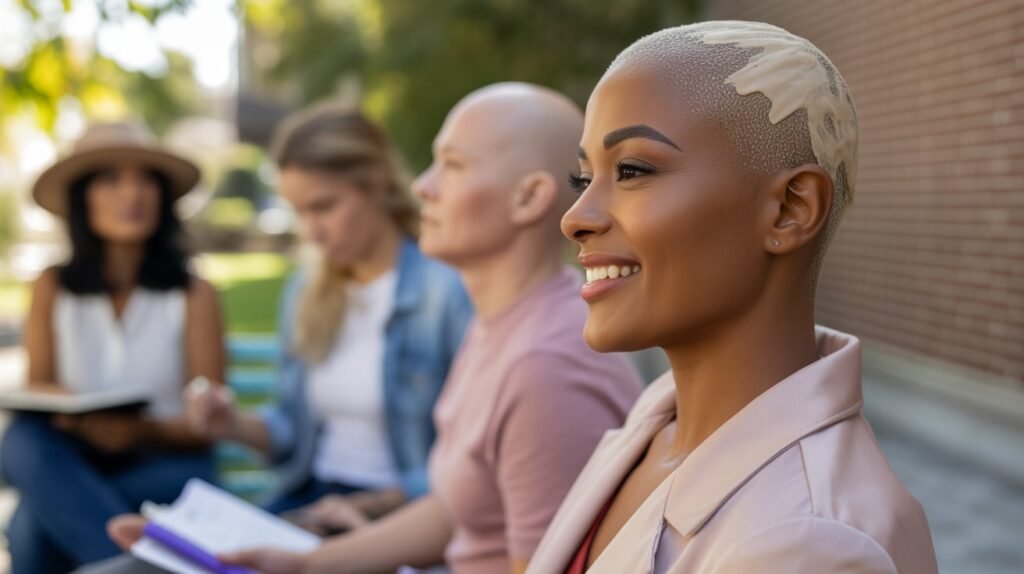
Summary
Hair loss is a common condition with many forms, from male pattern baldness to alopecia areata. The symptoms of hair loss range from simple hair shedding to complete baldness. Causes include genetics, stress, nutritional deficiencies, and medical conditions linked to hair loss.
Treatment is possible with medications, hair transplant surgery, natural remedies for hair loss, and lifestyle changes. Early diagnosis helps improve the prognosis of alopecia. While some forms cannot be fully reversed, supportive care, cosmetic options, and emotional support help patients live confidently. Knowing the right questions to ask a dermatologist ensures the best treatment plan.
FAQs
Why does hair fall out?
Hair falls out due to genetics, hormonal changes, stress, or medical conditions linked to hair loss.
What is the best treatment for thinning hair?
Early use of minoxidil, lifestyle changes, and in some cases PRP therapy for hair loss.
Can hair grow back after balding?
If follicles are destroyed, regrowth is unlikely. But some cases of alopecia areata or telogen effluvium may recover.
How can I stop hair loss naturally?
Through the best diet for hair growth, reducing stress, and following scalp care tips.
What does a dermatologist do for hair loss?
They provide proper dermatology care, order tests, and suggest personalized hair loss treatment options.
